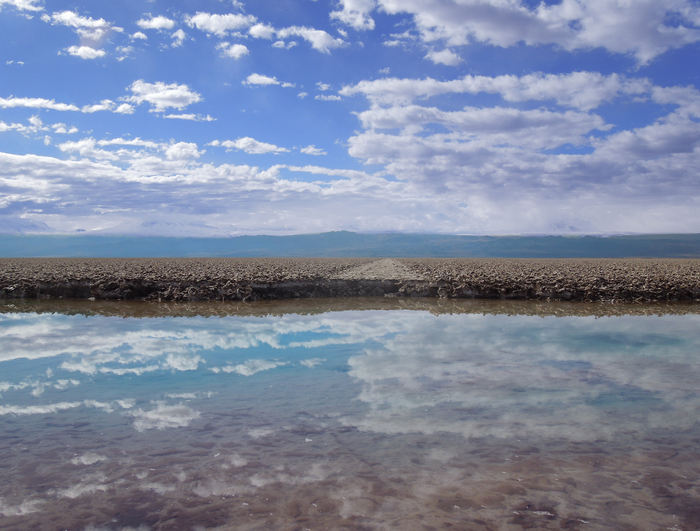A UNLV research team is developing sustainable water management solutions for rural arid areas in the U.S. and China, focusing on wastewater reuse through solar-powered treatment processes. The project aims to provide low-cost technologies for non-potable — and possibly potable — reuse in rural communities in both countries, addressing water scarcity and quality issues.
Tag: Water Scarcity
New study highlights expansion of drylands amidst impact of climate change
Nearly half of the world’s land surface is now classified as drylands and these areas are accelerating their own proliferation, according to new research.
Integrating Legumes into Conservation Agriculture: A Pathway to Sustainable Rice-Based Systems in the Eastern Indo-Gangetic Plain
A research team has reviewed the potential benefits of integrating legumes into Conservation Agriculture (CA) practices within rice-based systems in the Eastern Indo-Gangetic Plain (EIGP), highlighting its significant impact on enhancing crop productivity and sustainability.
Investigation of structural parameters for inclined weir-type solar stills
Abstract The solar still, in which saline or brackish water is converted into freshwater using renewable solar energy, can be an effective solution to water scarcity. Inclined solar stills are well-known due to their high production yields compared to other…
UAlbany Climatologist Awarded $2 Million to Study Climate Change in South America
UAlbany Professor Mathias Vuille is launching two research projects focused on past, present and future climate change in South America.
Desert hero unveiled: Cissus quadrangularis genome decodes drought survival tactics
In a recent study, scientists have unlocked the genetic secrets of Cissus quadrangularis, a plant that flourishes in the harshest of desert climates. The discovery of its adaptive traits and the Crassulacean acid metabolism (CAM) pathway marks a significant leap forward in the quest for drought-resistant crops.
Golden-Hour Water Use Efficiency: Pioneering Crop Productivity and Sustainability in the Face of Water Scarcity
A research team has shed light on the early morning ‘golden hours’ as a pivotal time for achieving optimal water use efficiency (WUE) in crops, revealing that plants can maintain lower transpiration rates and higher photosynthetic activity under favorable light conditions and minimal vapor pressure deficit (VPD).
ORNL, University of Kentucky focus on clean energy in Appalachia
The Department of Energy’s Oak Ridge National Laboratory hosted the second annual Appalachian Carbon Forum in Lexington March 7-8, 2024, where ORNL and University of Kentucky’s Center for Applied Energy Research scientists led discussions with representatives from industry, government and academia to discuss ways to transition to clean energy.
Drying without dying: Tracing water scarcity coping mechanisms from mosses to flowering plants
Imagine: You find the dried-up remains of a once green and lush philodendron on your bookshelf and realize you can’t remember the last time you watered your houseplants.
Don’t wait, desalinate: new water purification system cuts cost, energy expenses
A water purification system created by researchers at the Beckman Institute for Advanced Science and Technology separates salt and unnecessary particles with an electrified version of dialysis. Successfully applied to wastewater, the method saves money and saps 90% less energy than its counterparts.
Earlier snowpack melt in the West could bring summer water scarcity
Snow is melting earlier, and more rain is falling instead of snow in the mountain ranges of the Western U.S. and Canada, leading to a leaner snowpack that could impact agriculture, wildfire risk and municipal water supplies come summer, according to a new study from the University of Colorado Boulder.

How Environmentally Responsible Is Lithium Brine Mining? It Depends on How Old the Water Is
A groundbreaking new study recently published in the journal Earth’s Future and led by researchers at the University of Massachusetts Amherst in collaboration with the University of Alaska Anchorage, is the first to comprehensively account for the hydrological impact of lithium mining.
Save the planet (and your health) by steering clear of sweets and pastries
Need another reason to cut back on sugary foods and drinks, apart from an expanding waistline? They’re not helping the environment, contributing to a higher cropland, water scarcity and ecological footprint, according to a new review led by the University of South Australia.
Meeting biodiversity, climate, and water objectives through integrated strategies
Managing a strategically placed 30% of land for conservation could safeguard 70% of all considered terrestrial plant and vertebrate animal species, while simultaneously conserving more than 62% of the world’s above and below ground vulnerable carbon, and 68% of all clean water.
National Geographic Society grant to fund research into Easter Island
Binghamton University anthropologists Robert DiNapoli and Carl Lipo received a $60,280 grant from the National Geographic Society’s Committee for Research and Exploration to explore how ancient populations managed freshwater scarcity.

Study exposes global ripple effects of regional water scarcity
An integrated model of climate and human activity suggests water scarcity can have economic ripple effects across the globe – sometimes amplifying economic harm, sometimes even providing benefits to distant regions. The model informs the management of regional water resources and economic adaptation
Cooperation across boundaries and sectors could boost sustainable development in South Asia
A new analysis of food, energy, water, and climate change in the Indus Basin shows how a cross-boundary and multi-sectoral perspective could lead to economic benefits and lower costs for all countries involved.
NAU researchers co-author study that finds water efficiency achievable throughout U.S. without decrease in economic activity
Ben Ruddell and Richard Rushforth, with collaborators throughout the country, looked at how much water conservation can readily and affordably be achieved in each region and industry by looking at what conservation measures were already working and considering how much water is being used.
Planning for future water security in China
The findings of a new study underscore the value and potential of technological adoptions to help design targets and incentives for water scarcity mitigation measures.

Quenching Water Scarcity with a Good Pore
Researchers at UC San Diego and MIT linked theory and experiment to move closer to developing materials that address global water scarcity.
Water scarcity could impact 85% of Africa by 2050, new research shows
Twenty-eight countries in Africa could face water stress or scarcity by 2050, according to research led by faculty at Binghamton University, State University of New York.